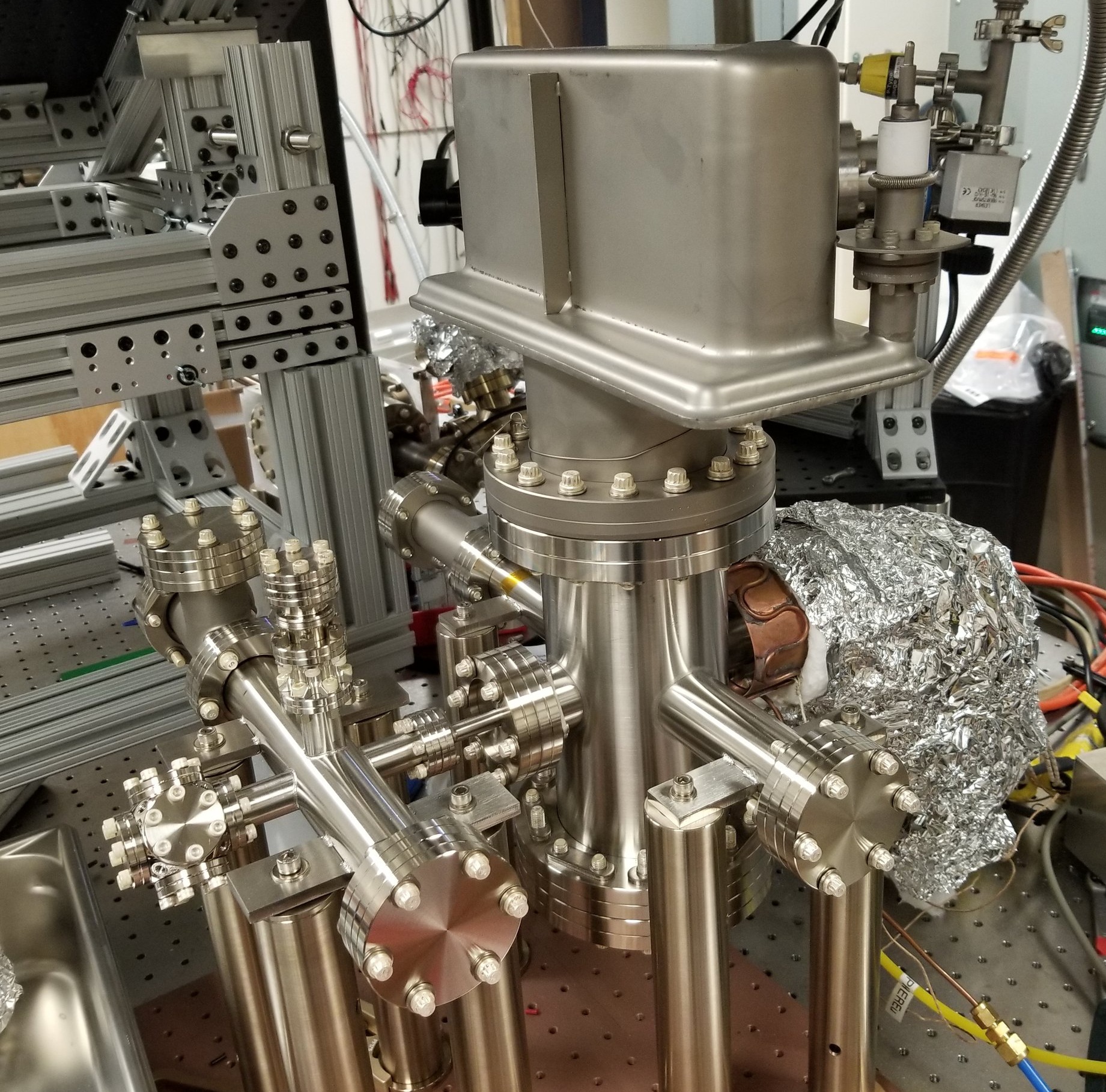E7: Ultracold Molecules
Lab room: B123 Birge
Lab phone: (510) 642-7269
Full quantum control over molecules in the ultracold regime has made remarkable progress in the past decade, but remains an open problem in the AMO physics community. The rich internal energy structure of diatomic molecules provides many flexible channels for quantum state manipulation. Specifically, molecules can rotate or vibrate back and forth, each of which contributes to the rich physics one can study.
In the case of heteronuclear molecules one can engineer large rotating or static electric dipole moments. These dipole moments give us an extra knob to perform manipulations on molecular systems, and can allow for the engineering of long-ranged, tunable, and anisotropic interactions. Ultracold molecules thus provide an intriguing platform to investigate quantum information technologies, quantum state-controlled chemistry, and the simulation of exotic strongly-correlated phases of matter!
The first stages of vacuum assembly, well underway.
This internal structure presents a plethora of interesting quantum phenomena to study in the laboratory, and an experimental challenge to control. We are presently investigating how each of these degrees of freedom plays into our ability to make and manipulate molecules in the quantum regime.
E7 is currently under construction to produce large, quantum degenerate mixtures of Lithium-7 and Rubidium-87 gases, and samples of ultracold ground state LiRb molecules. We are feeding a dual-species 3D magneto-optical trap (MOT) fed from a zeeman slower and 2D-MOT, and plan to cool the atoms to quantum degeneracy through a sequence of magnetic and optical evaporation stages. After cooling, the atoms will undergo coherent quantum state transfer into tightly bound molecules.

